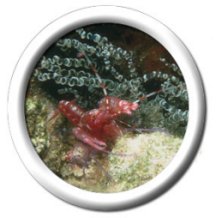This shrimp is one of 30,000 species of crustaceans in our oceans.
Click on image for full size
Windows Original, adapted from Corel Photography
Other Crustaceans
Crabs aren't the only crustaceans in the sea! The Cirripedia class is also very common. You probably know this class by its more common name, Barnacle. Barnacles are small, rounded animals generally found on rocky reefs or shores. They are also seen attached to boats.
Barnacles have a hard shell, and use their 'feet' to capture small animals called plankton that swim in the oceans. They usually live in large volumes together, and are sometimes covered up by other sea life. Most barnacles look like rocks, but some, like the Short-stalked Goose Barnacle, are much prettier.
Shrimp are also crustaceans. Like crabs, shrimp live near rocks and reefs. They have a longer body rather than a round one, and range from less than an inch to 6 inches in length. Grabham's Cleaner Shrimp has a very important job. It attracts fish with its white antennae and legs. When the fish gets close, it grasps the fish and removes parasites and cleans the fish!
There are many other types of crustaceans, like prawns and lobsters. All together, there are over 30,000 species of crustaceans in the seas. There just isn't enough room on this page to cover them all!
You might also be interested in:
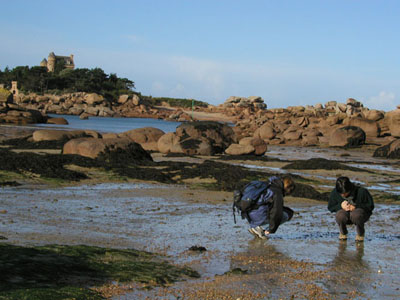
The intertidal zone is the area along a coastline that is underwater at high tide and above the water at low tide. Whether it’s a rocky coast, a sandy beach, or a salt marsh, life in the intertidal zone
...more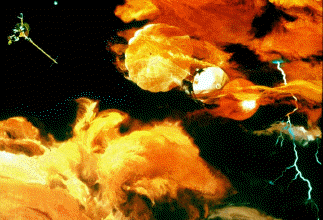
Jupiter's atmospheric environment is one of strong gravity, high pressure, strong winds, from 225 miles per hour to 1000 miles per hour, and cold temperatures of -270 degrees to +32 degrees (freezing temperature).
...more
In July, 1996, it was announced that Dr. David McKay, along with a team of scientists at Johnson Space Center (a division of NASA), had discovered possible fossils of bacteria in an ancient rock from Mars.
...more
Saturn's atmospheric environment is one of strong gravity, high pressure, strong winds, from 225 miles per hour to 1000 miles per hour, and cold temperatures of -270 degrees to +80 degrees. With winds
...more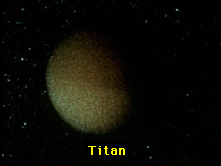
Titan's atmosphere is a lot like the Earth's, except that it is very cold, from -330 degrees to -290 degrees! Like the Earth, there is a lot of Nitrogen and other complex molecules. There also may be an
...more
Autotrophs are organisms that produce organic compounds from an inorganic source of carbon (carbon dioxide) given a source of energy. If the source of energy is the reactions of inorganic chemical compounds,
...more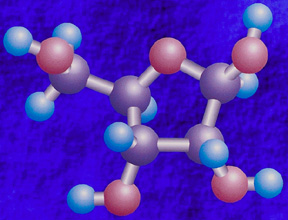
In the warm primordial ocean, aggregates of amino acids, proteins, and other hydrocarbons coalesced into a form called *coacervates*. Organic polymers such as amino acids will spontaneously form coacervates
...more


